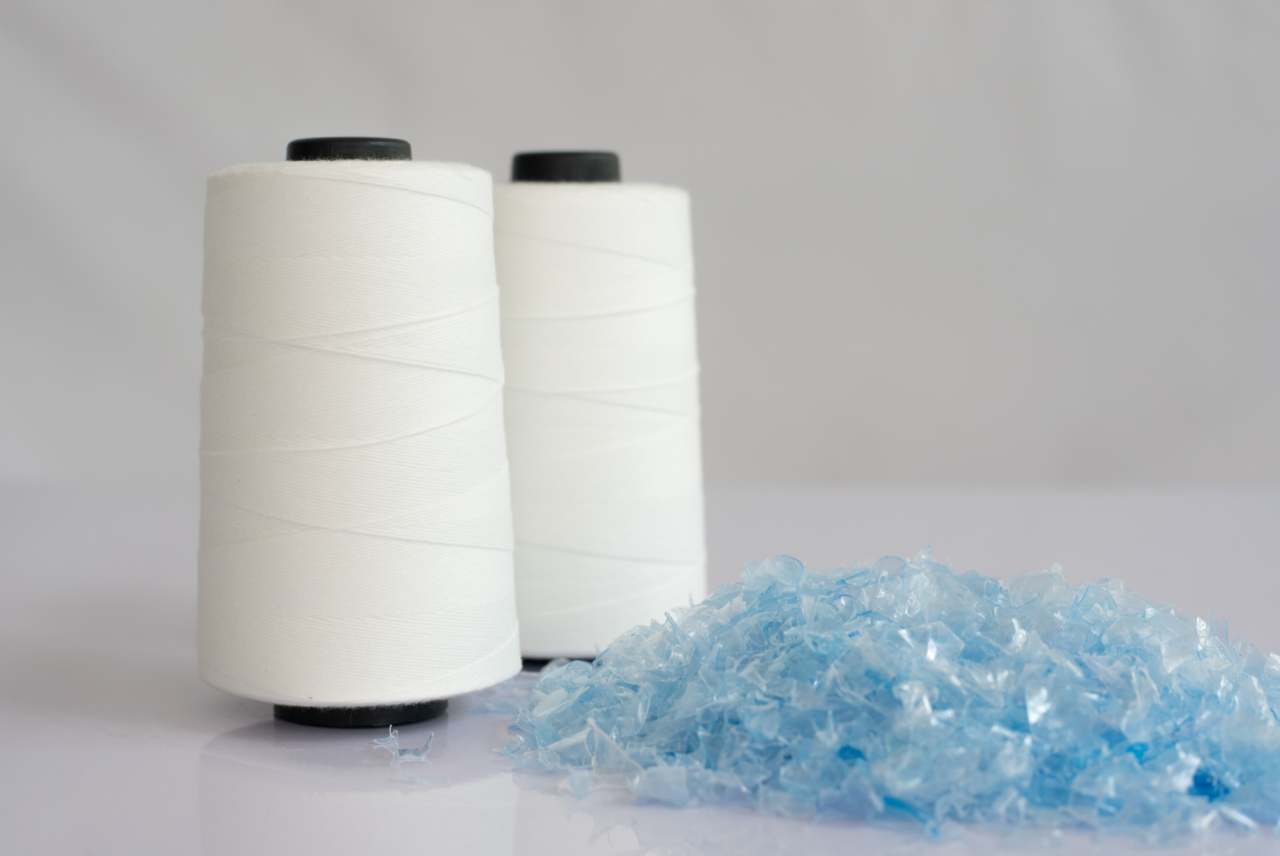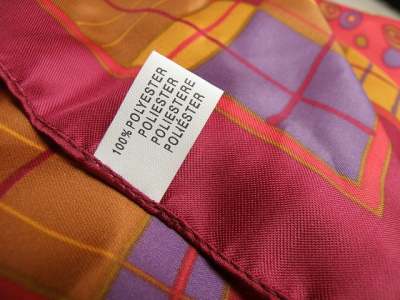As much as 64% of new fabrics are made of plastics. But with names like polyester and acrylic, you might not always be able to spot them.
How is plastic used in clothing?
Plastic is an incredibly durable and light material. It has also been very cheap to produce over recent decades, due to the dangerously low cost of fossil fuels. As a result, it has become central to the fashion industry.
However, you won’t ever find ‘plastic’ listed on a fabric label. Instead, the name of the fabric type will be shown. These fabrics are all made from plastic:
- Polyester
- Acrylic
- Nylon
- Polyamide
Polyester is the most common of these. It is made from crude oil, which is reacted with a series of chemicals in order to make liquid polyester. This liquid is then pushed through tiny holes to make long threads that can be woven into thread and then into fabric.
Synthetic materials are also used heavily in footwear. Read our separate article discussing the problems of leather and synthetic materials for footwear.
What are the problems with plastic clothing?
The textile industry uses 15% of all plastic globally. Plastics are made from petrochemicals, which are in turn produced from oil and gas. The plastic industry is therefore helping to sustain fossil fuel demand – at a time when we should be rapidly ending fossil fuel use and all new fossil fuel extraction.
In fact, as other industries (like heating and transport) move away from fossil fuel dependence, there is a risk that oil and gas will just be redirected to plastic production. Petrochemicals are set to be the largest driver of oil demand in the coming decades, responsible for more than 50% by 2050. Our dependence on plastics – along with other petrochemical products like synthetic pesticides and fertilisers – is undermining global climate goals.
But fossil fuels are not the only issue with plastic clothing. Plastic waste is found in every corner of our planet, and can seriously harm animals who eat or get trapped by it.
Plastics don’t biodegrade, meaning that when they break down they just turn into ever smaller pieces, known as microplastics. Microplastics are not only released if plastic clothing ends up in landfill: they are released every time we wash or tumble dry our clothes.
Microplastics have been found around the world: they are on the ocean floor and trapped in Arctic sea ice. They can be toxic to sea life, and can damage fishes’ organs, change their behaviour or harm their ability to reproduce.
As humans eat seafood and drink water, they ingest these tiny pieces of plastic. In 2022, scientists detected plastics in human blood for the first time. Almost 80% of those tested had plastic in their blood. We don’t yet know for sure what the impact on human health is, but in labs, microplastics have been found to cause damage to human cells.







